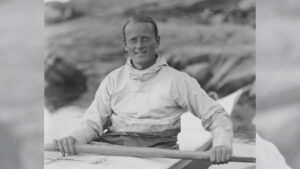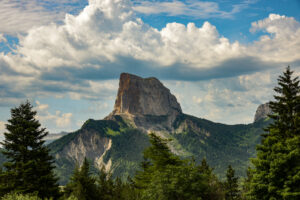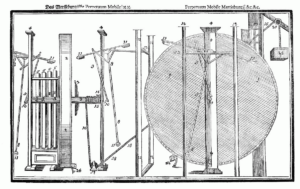In honor of International Women’s Day, we explore the life of one of the world’s great female explorers — American mountaineer, travel writer, and cartographer Fanny Bullock Workman.
Family life
Born into a wealthy family in Massachusetts in 1859, she had everything a girl of her standing could hope for: a good education, money and status. But the confines and expectations of Victorian society did not sit well with Fanny’s untamed spirit. She felt the calling of something deeper and beyond herself.
After marrying a kindred soul, William Hunter Workman, in 1882, she chose to live unconventionally, despite the backlash from those around her. Despite their two children, Rachel and Siegfried, the unusual couple still traveled whenever they felt the urge, leaving the kids in the care of nannies. Years later, the couple even missed their daughter’s wedding during one such exotic adventure.
Travel writing
Fanny became an accomplished travel writer, crafting captivating narratives of her experiences in North Africa, Europe, and Asia. Typically, she traveled by bicycle, often thousands of kilometers. From 1888 to 1893, Fanny and her husband cycled through Switzerland, Italy, and France — not as civilized then as now. In 1895, they took their bikes through Spain. Then in 1897, they undertook a long, arduous cycling journey from India to Java.
From these and other travels, she published eight books. These showcased not just cultures, art, and traditions, but also the hardships of the people they met. She showed, in particular, the negative experiences of women. She felt it important to highlight their struggles amid the growing outcry for women’s suffrage and rights.

Workman in an iconic photo, advocating for the women’s vote. Photo: United States Library of Congress
Mountaineering
Eventually, Fanny took a liking to mountaineering. The mid to late 1800s saw a general increase in women mountaineers, although European climbing organizations tried to prevent this shattering of norms. However, American groups promoted a more inclusive and modern vision.
Fanny became one of the first women to climb many well-known peaks. For example, although two French women beat her up Mont Blanc, she was one of the first women to climb it, as well as the Matterhorn and the Jungfrau. She also tackled Pinnacle Peak and Siegfriedhorn, and — in the fashion of the day — named a peak after herself, Mount Bullock Workman.

Fanny Bullock Workman and her husband William Hunter Workman, 1911. Photo: Charles Scribner’s Sons
She and her husband particularly loved exploring glaciers and became amateur glaciologists. Most notably, they explored the Rose Glacier and Chogo Lungma Glacier in the Karakoram. They published their findings in The Geographic Journal.
During their expeditions, they also researched weather and the behavior of glaciers and tried their hand at mapmaking. They included their findings in their books. However, their scientific work was not as well received as their travel writing. Some critics found their research flawed.
Awards and recognition
Yet Fanny’s accomplishments were too great to ignore. In the end, she won many medals of honor for her expeditions and gained membership into elite clubs like the American Alpine Club and the Royal Geographical Society. She spoke at many conferences and renowned institutions and thereby inspired successive generations of women to break the barriers of social expectations.






